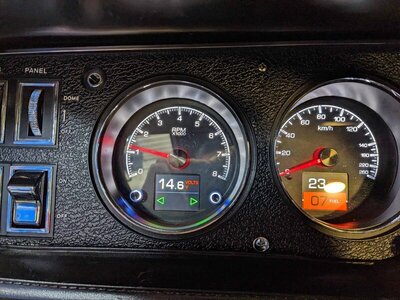OzCharger69
Well-Known Member
Hi all,
I've always had this problem but it's getting to me now.
69 Charger, front discs / rear drums, bendix brake double diaphragm booster, DOT 5 fluid recently flushed. Front calipers are big single pots from a Dart. Vacuum of 15 at idle
For the first few minutes after starting the engine, I really need to push on the pedal to get some sort of braking. Even idling on choke on drive it wants to push forward unless I'm standing on the pedal. It doesn't matter if the ambient temperature is freezing or warm. After a few minutes of driving and braking, brakes are fine. I can lock up the fronts with no huge effort. I'm just wondering if it has something to do with the brake pad material. Any input would be much appreciated.
I've always had this problem but it's getting to me now.
69 Charger, front discs / rear drums, bendix brake double diaphragm booster, DOT 5 fluid recently flushed. Front calipers are big single pots from a Dart. Vacuum of 15 at idle
For the first few minutes after starting the engine, I really need to push on the pedal to get some sort of braking. Even idling on choke on drive it wants to push forward unless I'm standing on the pedal. It doesn't matter if the ambient temperature is freezing or warm. After a few minutes of driving and braking, brakes are fine. I can lock up the fronts with no huge effort. I'm just wondering if it has something to do with the brake pad material. Any input would be much appreciated.
















